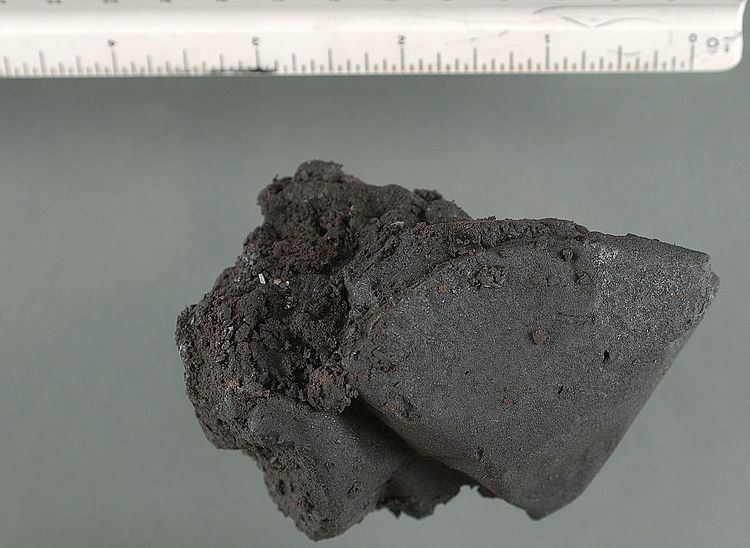 | ||
Black tar heroin is heroin acetate. Other forms of heroin require additional steps of purification post acetylation. With Black Tar the product's processing stops immediately after acetylation. Its unique consistency however is due to acetylation without a reflux apparatus. As in Homebake Heroin in Australia and New Zealand the crude acetylation results in a gooey mass.
Contents
Black Tar as a type holds a variable admixture morphine derivatives—predominantly 6-MAM (6-monoacetylmorphine) which is another result of crude acetylation. The lack of proper reflux during acetylation fails to remove much of the moisture retained in the acetylating agent, glacial acetic acid.
Black tar heroin is often produced in Latin America, and is most commonly found in the western and southern parts of the United States, while also being occasionally found in western Canada and Europe. It has a varying consistency depending on manufacturing methods, cutting agents, and moisture levels, ranging in quality from a black-brown, tarry goo in unrefined form to a uniform, light-brown powder when further processed and cut with lactose.
Composition
Pure morphine and heroin are both fine powders. Tar's unique appearance and texture is due to its acetylation without benefit of the usual reflux apparatus.
The assumption that tar has less adulterants and diluents is a misconception. The most common adulterant is lactose, which is added to tar via dissolution of both substances in a liquid medium, reheating and filtering, and then recrystallizing. This process is very simple and can be accomplished in any kitchen with no level of expertise needed.
The price per kilogram of black tar heroin has increased from one-tenth that of South American powder heroin in the mid-1990s to between one-half and three-quarters in 2003 due to increased distributional acumen combined with increased demand in black tar's traditional realm of distribution. Black tar heroin distribution has steadily risen in recent years, while that of U.S. east coast powder varieties has dropped; heroin production in Colombia has decreased as U.S.-funded efforts to eradicate Colombian poppy fields continue.
Health effects
People who intravenously inject black tar heroin are at higher risk of venous sclerosis than those injecting powder heroin. In this condition, the veins narrow and harden which makes repeated injection there nearly impossible. Researchers at UC-San Francisco have found that the rapidity with which black tar heroin destroys veins, along with its gummier consistency, may put people who inject it at a lower risk of HIV infection because they may be forced to inject subcutaneously (rather than into veins), and needles must be thoroughly rinsed free of 'black tar' between injections if new sterilized ones are not available.
The presence of 6-monoacetylcodeine found in tar heroin has not been tested in humans but has been shown to be toxic alone and more toxic when mixed with mono- or di- acetyl morphine potentially making tar more toxic than refined diamorphine.
At least one study has drawn attention to lower rates of HIV infection amongst drug injectors in which black tar heroin is the major form of street-available heroin, suggesting that this may be due to the need to heat black tar heroin to dissolve it (which also inactivates any HIV present in the solution).
However, black tar heroin injectors can be at increased risk of life-threatening bacterial infections, in particular necrotizing soft tissue infection. The practice of "skin-popping" or subcutaneous injection predisposes to necrotizing fasciitis or necrotizing cellulitis from Clostridium perfringens, while deep intramuscular injection predisposes to necrotizing myositis. Tar heroin injection can also be associated with Clostridium botulinum infection.
Alternative routes of administration
In some parts of the United States, especially the lower states, black tar may be the only form of heroin that is available. Many users do not inject.
